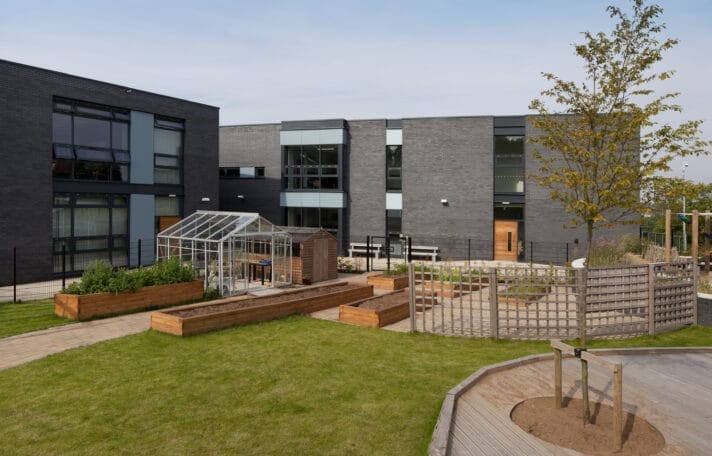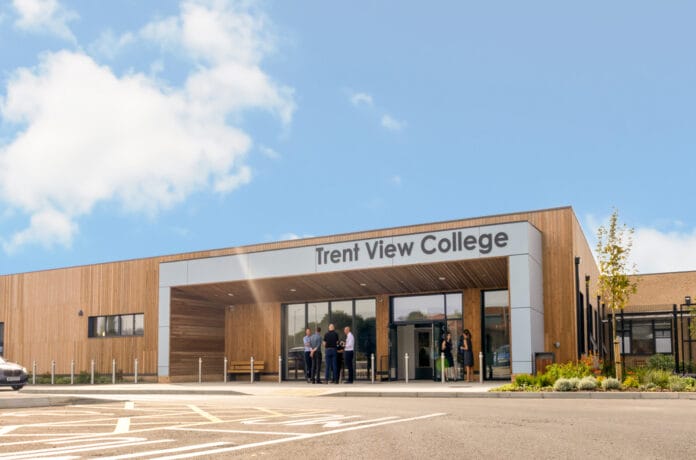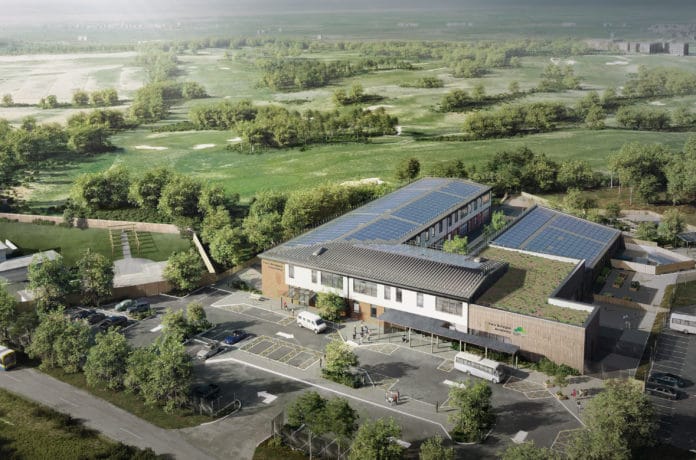
Landscape elements have too often been considered as being complimentary rather than integral to project design, and are subsequently still, at times, value engineered out of projects. Within the Special Educational Needs (SEN) environment, we need to realise the potential of landscape in fulfilling multiple needs of users.
How can we deliver landscape schemes that work harder in the space available, to add greater value to the users’ experience?
The SEN landscape is consequently multifunctional; it is a classroom, a play area, a safe space, an opportunity to burn off energy and a place to encourage pupils to practice and learn normal, everyday experiences safely.
What is particularly challenging when designing for SEN is the variety of users these spaces serve, and the complex needs that they have. To successfully create spaces and places that are not only accessible by pupils, but also contribute to their development and wellbeing, means viewing the opportunities and constraints from very different perspectives.
Landscape architecture is fundamental to supporting these often-complex needs of the pupils within SEN facilities. Outside the constraints of buildings, pupils have the freedom to explore and discover in ways that are personal to them. Different sized spaces for large- and small-scale activities, break out areas for children feeling distress, and maintaining a circular landscape with journey paths that flows throughout the whole area are features that we need to include in all SEN developments (as shown in our design for Euler Academy – pictured above). There is strong evidence that providing sensory elements throughout the landscape has multiple benefits for SEN children, who may experience heightened and/or lowered sensory abilities. Each project therefore presents the opportunity to integrate strong use of colour and green spaces, textures, fragrance, sound panels and chimes, and patches to grow fruit and vegetables, as seen in HLM’s design of Talbot SEN School, Sheffield (pictured, below). As part of this bespoke scheme, we also included an educational woodland wildlife habitat including a pond with dipping platform and teaching area, resulting in a varied and exciting environment for children to explore and enjoy.
In addition to these considerations, each school’s demographics need to be reflected in the design of the landscape; the percentage of ambulant and non-ambulant pupils significantly impacts the design development.
Accessibility for wheelchair users is therefore an important consideration throughout all elements; not just the ground level and terrain, but access to raised flower beds, sensory experiences, tactile panels, and green walls to enable a tactile experience even for the children with the least mobility. HLM’s design for a new SEN school in Scunthorpe demonstrated these interactive opportunities. We have also found that the staff and pupils often benefit from outdoor teaching and learning, with the ‘forest school’ concept being specified in SEN briefs more often. Landscape elements are too often considered as being complimentary rather than integral to project design, and are subsequently still regularly value engineered out of projects. However, utilising outside areas for calming and mindful activities, for example horticulture or looking after animals, has been recognized as having a direct benefit on the wellbeing of end users, particularly in the SEN environment where needs are varied and often complex.
For ambulant children, the school landscape provides space to exert energy, but is also an opportunity to prepare them for later life outside of education. For non-ambulant children, we have found it beneficial to utilize the outside space to incorporate elements that pupils will encounter, such as steps, ramps, benches, road crossings and kerbs, to increase familiarity with these aspects of everyday life.
The SEN landscape is consequently multifunctional; it is a classroom, a play area, a safe space, an opportunity to burn off energy and a place to encourage pupils to practice and learn normal, everyday experiences safely. Large areas of the site are often required for drop off / pick up by mini-bus and we take the opportunity to design these areas to be multifunctional where feasible. Careful design of the site security often results in these areas being used by the children throughout the school day for physical exercise and cycle practice.
There are increasing options that can be integrated into SEN landscapes, and these are only going to improve, allowing us to create the most inclusive environments possible.
Every brief is unique, and SEN projects one of the most complex when designing to delight the users and encourage their development.




